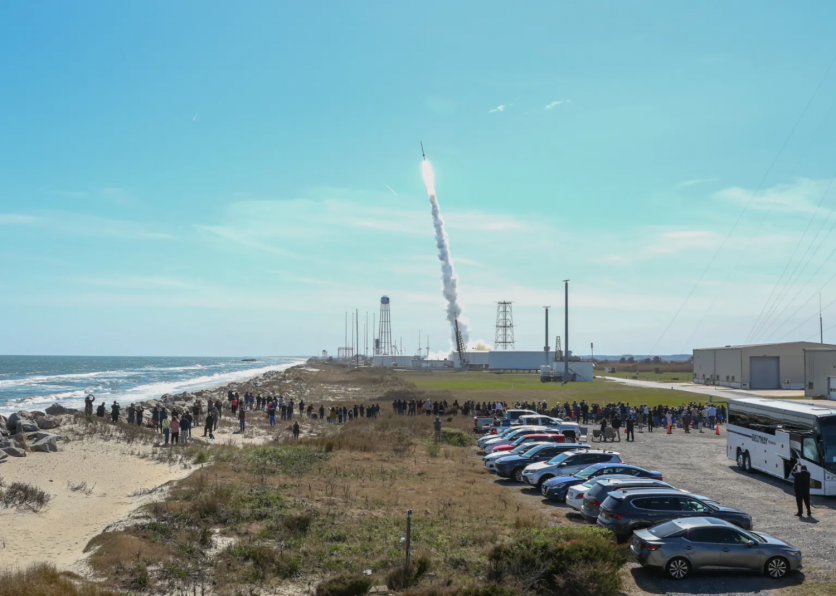NASA's Wallops Flight Facility in Virginia was a hive of activity on April 8, as three Black Brant IX sounding rockets pierced the sky during the total solar eclipse.

NASA Launches Sounding Rockets During the Total Solar Eclipse
These rockets embarked on the Atmospheric Perturbations around Eclipse Path (APEP) mission, aiming to delve into the disturbances within Earth's electrified atmosphere, the ionosphere, when the Moon obscures the Sun. The launches were strategically timed to capture data before, during, and after the eclipse's peak in Virginia.
The APEP mission targets the ionosphere, a layer of Earth's atmosphere situated between 55 to 310 miles (90 to 500 kilometers) above the surface. This electrified region is crucial in reflecting and refracting radio signals, impacting communication systems and satellite operations.
Unraveling the ionosphere's mysteries and forecasting disturbances are vital for maintaining smooth communication networks in our technology-dependent world.
The ionosphere acts as a boundary between Earth's lower atmosphere and outer space and it undergoes constant flux due to solar and terrestrial influences, according to NASA.
Solar radiation ionizes particles in this region, leading to charged particles that affect communication signals. However, terrestrial and space weather phenomena further complicate its dynamics, challenging real-time predictions.
Read Also : NASA Captures Sun Unleashing a Powerful Solar Flare That Triggers Radio Blackouts in Western US
Why NASA is Launching these Rockets
According to NASA, eclipses provide a unique opportunity to study rapid changes in the ionosphere, as the shadow cast by the Moon induces localized atmospheric disturbances.
These disturbances, triggered by the abrupt dusk-like conditions during an eclipse, influence various radio communication frequencies. By gathering data during this celestial event, scientists aim to refine predictive models and enhance our understanding of ionospheric behavior.
The APEP rockets, soaring to heights of up to 260 miles (420 kilometers), carry instruments to measure particle density, electric and magnetic fields, and other key parameters.
Additionally, each rocket releases secondary instruments, akin to two-liter soda bottles, to enhance data collection efficiency. This approach amplifies scientific insights while minimizing resource utilization.
With the next total solar eclipse in the contiguous U.S. not anticipated until 2044, the APEP mission underscores the value of seizing rare celestial events for scientific exploration.
By leveraging these opportunities, researchers strive to unlock the secrets of Earth's ionosphere, paving the way for enhanced communication technologies and space weather forecasting.
Related Article : A Sunspot With the Size of Four Earths Ejects 10 Million Degree Solar Flare, Causes Radio Blackout over the Pacific

ⓒ 2026 TECHTIMES.com All rights reserved. Do not reproduce without permission.




